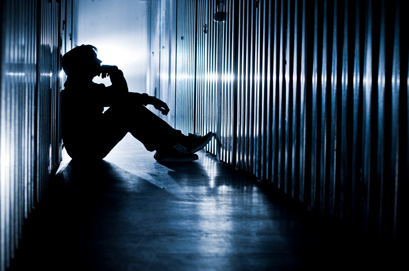No, it isn’t a good idea. There’s widespread agreement on that front. Nonetheless, we seem to struggle to come up with viable alternatives.
Here’s a recent article on the subject, one of many:
Criminalizing the most vulnerable’: Should the mentally ill be behind bars?
Frankly, jail staff and prison wardens that I’ve worked with would emphatically agree: Their institutions are not the best place to put someone who is seriously emotionally disturbed. They’re eager to see society explore other options. When asked why, they often cite one or more of the following difficulties.
- Simply housing the mentally ill takes up valuable space in already crowded correctional facilities— space that could be put to other uses, more appropriate to the facility’s mission.
- Mentally ill individuals tend to have medical and psychiatric needs well beyond the capabilities of most correctional facilities. There are facilities that can meet those needs, but far too few of them.
- The emotionally disturbed person represents an especially vulnerable subpopulation within the institution– at elevated risk of critical incidents, even fatalities. “This is a constant concern,” one warden emphasized. “Simply keeping some people safe.”
- Last but not least: Corrections officers may be inadequately prepared to manage a disturbed person’s erratic behavior. The officer’s attempts to intervene can actually provoke a crisis, rather than prevent one.
If you’re unfamiliar with the difference between jail and prison (many healthcare professionals are), it’s mostly about length of stay. Jail is typically intended to house people who await trial or formal sentencing — perhaps twelve months or less.
Prisons, on the other hand, house those already sentenced, usually to terms beyond a year. In the case of certain crimes, someone’s incarceration can extend for many years. As a result, a prison is generally a larger-capacity institution than a jail.
Over the past years, as rates of psychological distress have escalated– I’m sure you’re aware of that— jail has emerged as a kind of default holding facility used by communities to temporarily house and control those whose behavior can’t be managed on the streets. Or in the home, if they happen to have a stable home environment, which many do not.
Stays can be quite brief, perhaps only a few days or weeks, followed by release, and in many cases, a return to the old environment. Where, unfortunately, relapse is likely.
It becomes a classic revolving door, much like the hospital detox wards of yesteryear. A short term ‘solution’, as the saying went, to an extremely long-term problem.
Prisons, ironically, have been burdened by responsibilities that once belonged to enormous, state-run psychiatric hospitals. Many of those were shut down half a century ago, on a promise of returning the chronically mentally ill to their communities– where they would benefit from new, state-of-the-art community mental health centers capable of providing a full range of needed services.
You may already be aware that while some of these centers were successfully opened, others were not. Or were sadly under-resourced for the challenges they faced.
Casualties of poor planning, I suppose. Or the inevitable budget cutbacks.
In a way, many communities find themselves back at square one — searching for something, anything really, to take the mentally ill off the street and into some level of care that might keep them out of correctional facilities, once and for all.













